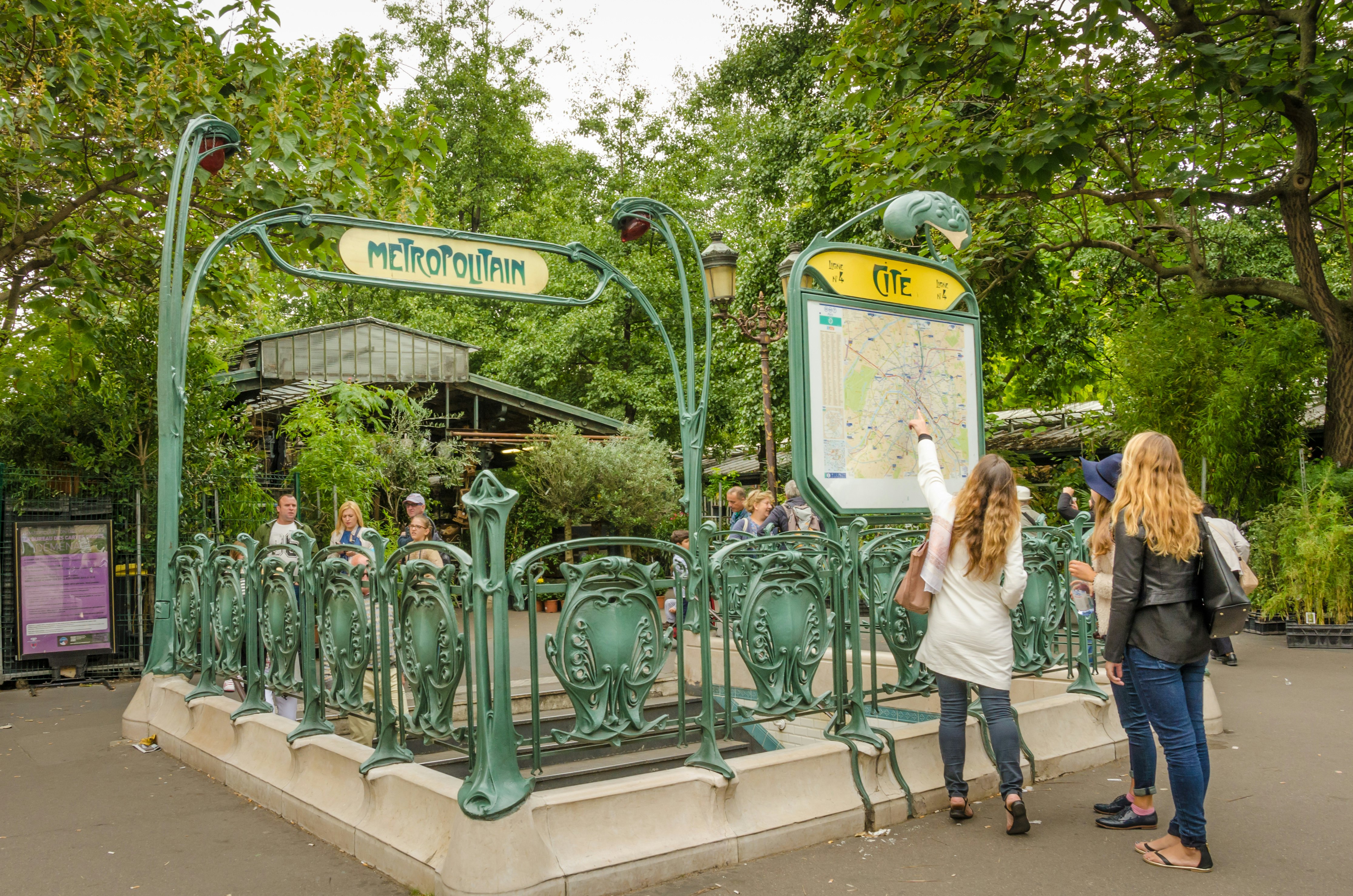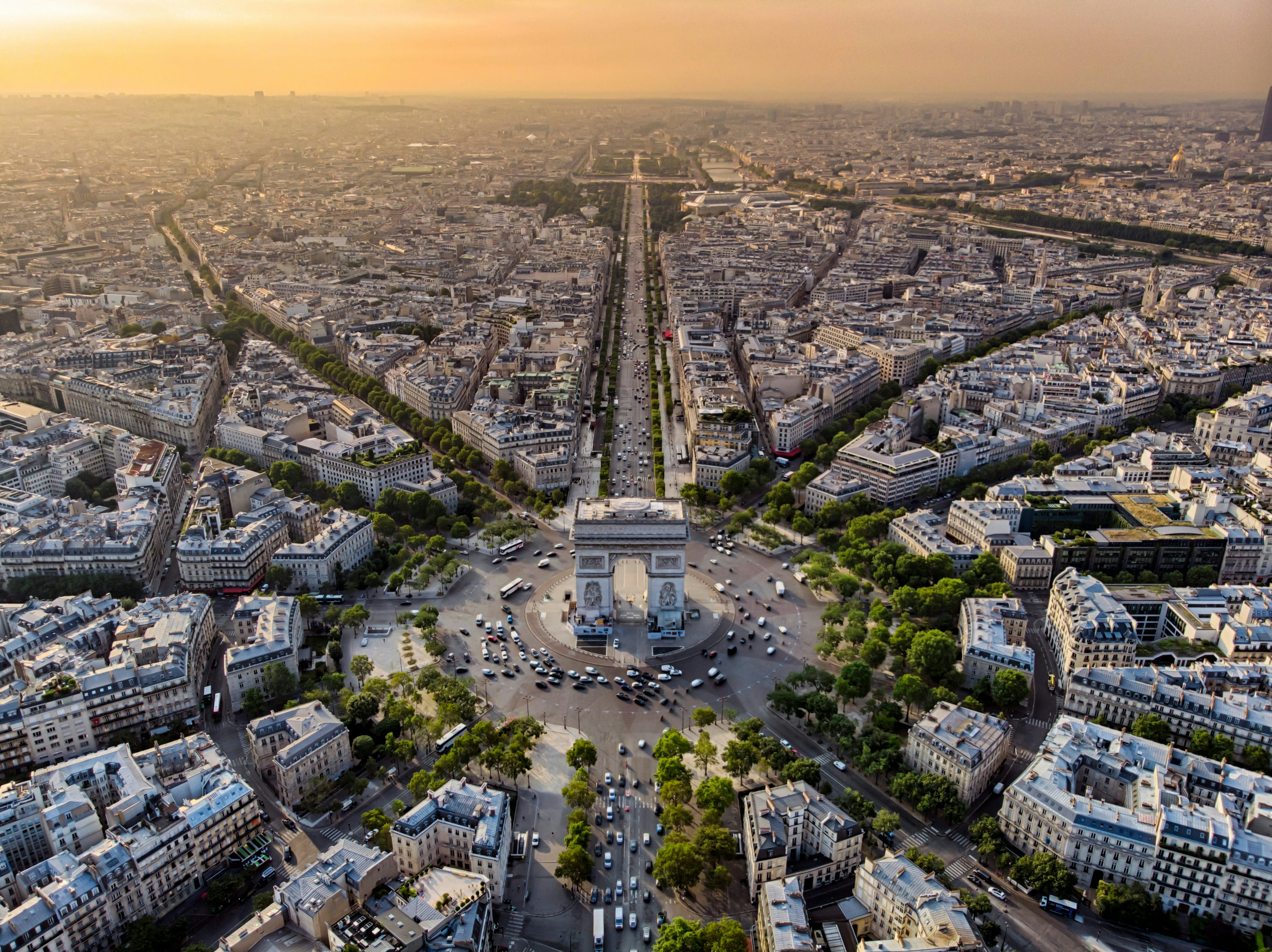
The 30 best countries, cities and regions to visit in 2025

Find your way around Paris with this guide to public transit, bike hire and taxis © Charday Penn / Getty Images
Alexis is one of the authors of our latest Paris guidebook. Here she shares her tips on navigating Paris' public transport, taxis and more.
Paris is a gorgeous sprawl of beautiful monuments and interesting neighborhoods and, for many, walking is the way to go.
To cover the most ground, the convenient Paris metro blankets the city. Meanwhile, the comprehensive bus system allows you to sightsee while traveling, and cycling in the open air is as delightful as it looks. Here's what you need to know about Paris’ transport network, tickets and taxis.

Paris’ train network consists of two separate but linked systems: the metro and the RER. The metro currently has 16 lines (numbered 1–14, plus two secondary lines, 3bis and 7bis). The network is currently being expanded to add another four lines as part of the Grand Paris Express project. The RER has five main lines, A to E. The systems are fully integrated and you can easily transfer from one train to another. RER express trains save time crossing the city and serve the suburbs.
Escalators and elevators ease long climbs within the stations, but are not available at every station. Service is very frequent, with wait times generally under five minutes. Some metro lines run above street level, offering scenic views. It's usually quicker to walk than to take the metro for only one or two stops.
With no stairs, buses are widely accessible and are good for parents with prams/strollers and people with limited mobility. Bus lines complement the metro: for some journeys a bus is the more direct – and scenic – way to go. Stops show schedules, routes and often the wait time until the next bus.
Use the RATP, IDF Mobilités and SNCF apps for journey planning, route maps and wait times for the next train or bus, or to charge up your travel passes. Also, metro and bus maps of various sizes and degrees of detail are available for free at metro ticket windows.
In metro stations and on board, keep an eye out for pickpockets – they’re top zones of action.

Combining scenery and convenience, the Batobus is a handy hop-on, hop-off service stopping at nine key destinations along the Seine. In warmer months the service runs regularly through the day and offers a chance for a river cruise at a fraction of the price of a tour boat.
The Vélib’ bike-share scheme has over 20,000 bikes, both classic (green) and electric (blue) at 1400 stations citywide. Buy a subscription online using your RATP Navigo transit pass or credit card, or at docking stations (it only accepts European-compatible chip-and-pin credit cards). There are single-trip, day and multiday pass options. App-based electric trottinettes (scooters), wildly popular with tourists, were discontinued in September 2023 by popular vote.
The cheapest and easiest way to use public transport in Paris is via the Navigo Easy card. Sold for €2 at all metro and RER ticket windows as well as RATP-affiliated outlets (eg tobacconists and markets), this credit-card-sized farecard is used for all your ticketing needs. You can also charge one up virtually on the RATP app for free.
Navigo, like London’s Oyster card or Hong Kong’s Octopus card, is a system that provides a full range of fare options. You load the card with value which is then deducted for each ride. To save money, buy carnets, which are credits for 10 rides sold at a discount (this is the cheapest way to ride the metro and buses). You can also buy various passes that are good for unlimited rides across a range of fare zones and durations (such as Mobilis, with one day of unlimited travel). However, one disadvantage of passes is that they are tied to the calendar eg a one-day pass starts at 12:01am, a seven-day pass always begins on Monday, and a monthly pass always begins on the first day of the month.

Parking in Paris is costly and difficult. If you’re renting a car to take to the countryside, don’t pick it up until you are leaving town. And if you’re driving your own car, know that to enter the city within the Boulevard Périphérique (ring road) between 8am and 8pm Monday to Friday, a Crit'Air Vignette (compulsory anti-pollution sticker) is needed for all cars, motorcycles and trucks registered after 1997, including foreign-registered vehicles. Older vehicles are banned during these hours. The sticker is not necessary for the ring road itself.
Find taxis at official stands or via private companies and apps. There are queues of available cabs at major train stations. Paris taxis are expensive but can be a blessing if you have a lot of luggage and can't face the metro steps. Ride-share apps like Uber are active.
Trains are the best ways to get to and from Paris' airports. The RER B line from Paris Charles de Gaulle (CDG) crosses under the middle of Paris, with stops that include Gare du Nord, Châtelet–Les Halles, St-Michel–Notre Dame and Luxembourg. Some trains run express through the suburbs, saving about 10 minutes. An even faster express route is slated for 2027. From Orly Airport, you can connect to the RER B. Beginning in mid-2024, the airport will also be served by Line 14 of the metro. Aéroport de Beauvais, used by some budget airlines, is a long and slow 75km (47 miles) by bus from Paris.
Taxis and ride shares are also convenient, but can get mired in traffic and become costly.

Paris is an ancient city and therefore not particularly well equipped for visiteurs handicapés (disabled visitors): kerb ramps are few and older public facilities and the metro are mostly inaccessible for those in a wheelchair (fauteuil roulant). Efforts are being made to improve things, however, especially ahead of the 2024 Olympic and Paralympic Games.
Paris’ airports are fully in line with international standards for accessibility. Note however that transport to and from the airports may be an issue as many metro stations in the city are not fully accessible – the RATP makes info available through its app and website. Paris buses, however, are all accessible, with low floors and wide doors.
The SNCF has made many of its train carriages more accessible to people with disabilities, including the RER trains. For information and advice on planning your journey from station to station, contact the service Accès Plus.
Taxis G7 has hundreds of low-base cars and over 100 cars equipped with ramps, and drivers trained in helping passengers with disabilities. Guide dogs are accepted in its entire fleet.
An excellent first stop is the Paris Tourist Office's website for a wealth of useful information organized by theme as well as practical information such as where to rent medical equipment or locate automatic public toilets. You can download the up-to-date Accessible Paris guide, which is also available in hard copy from tourist information centers in the city.
Plan with a local
